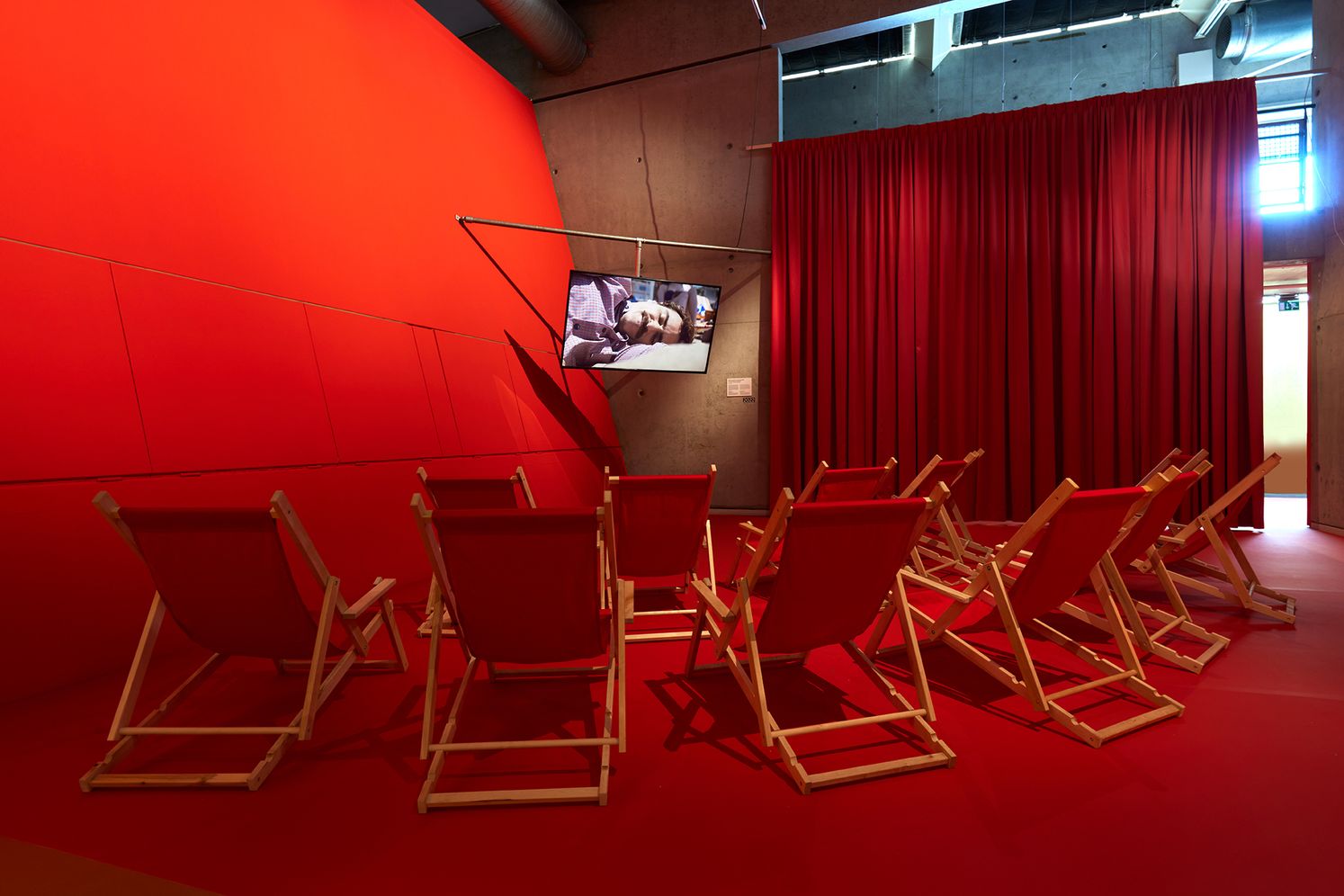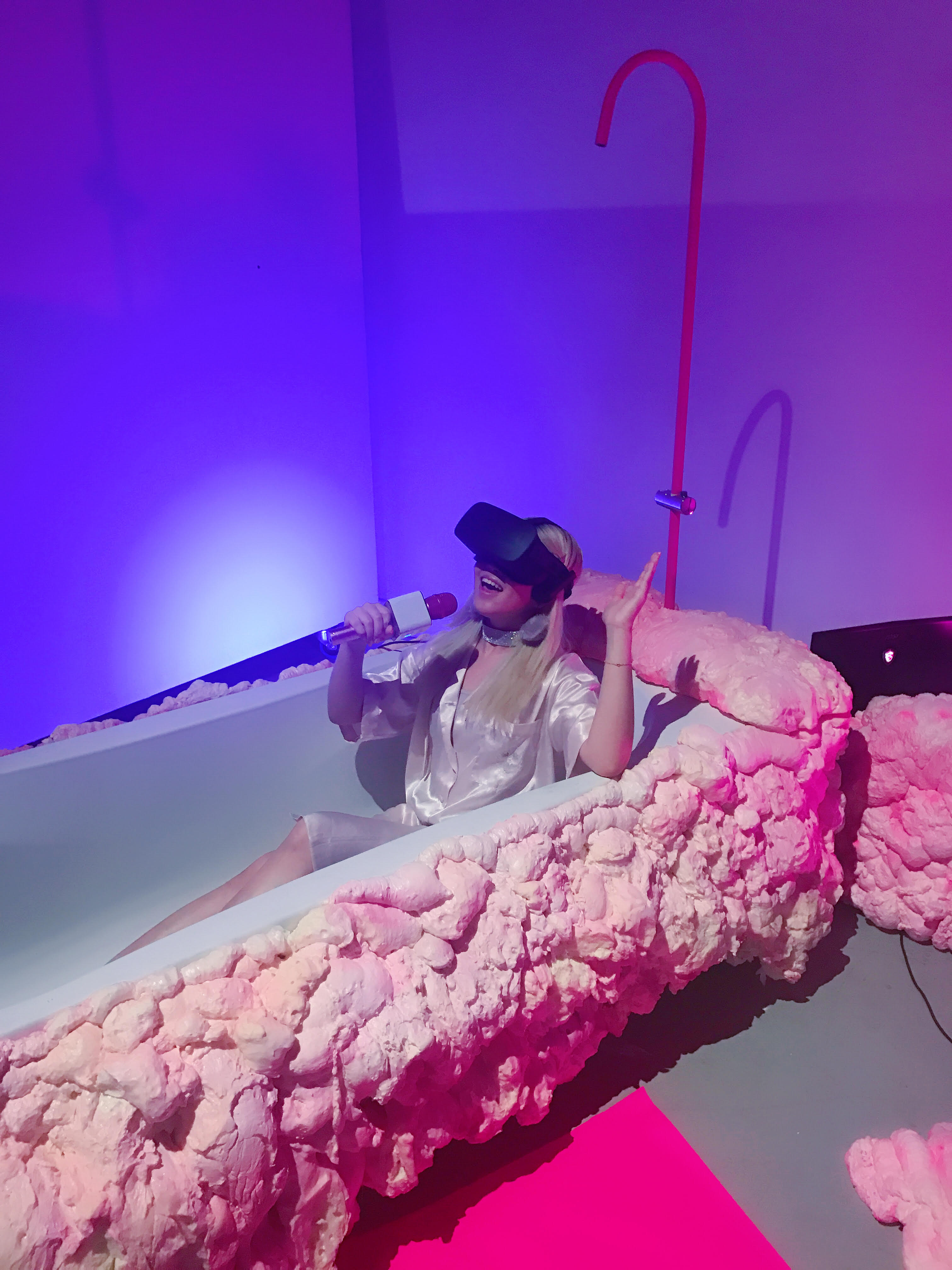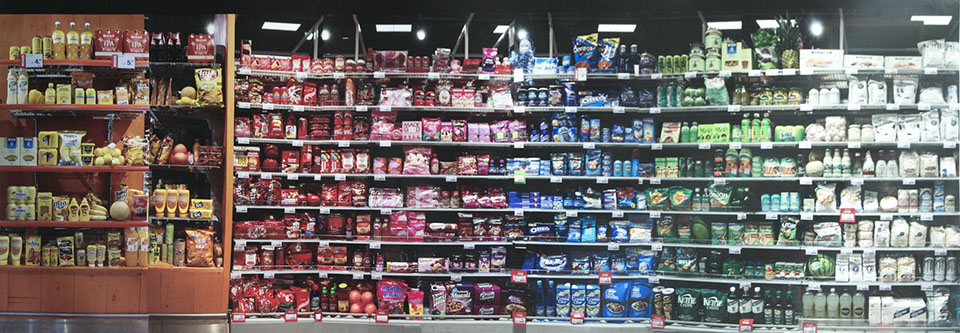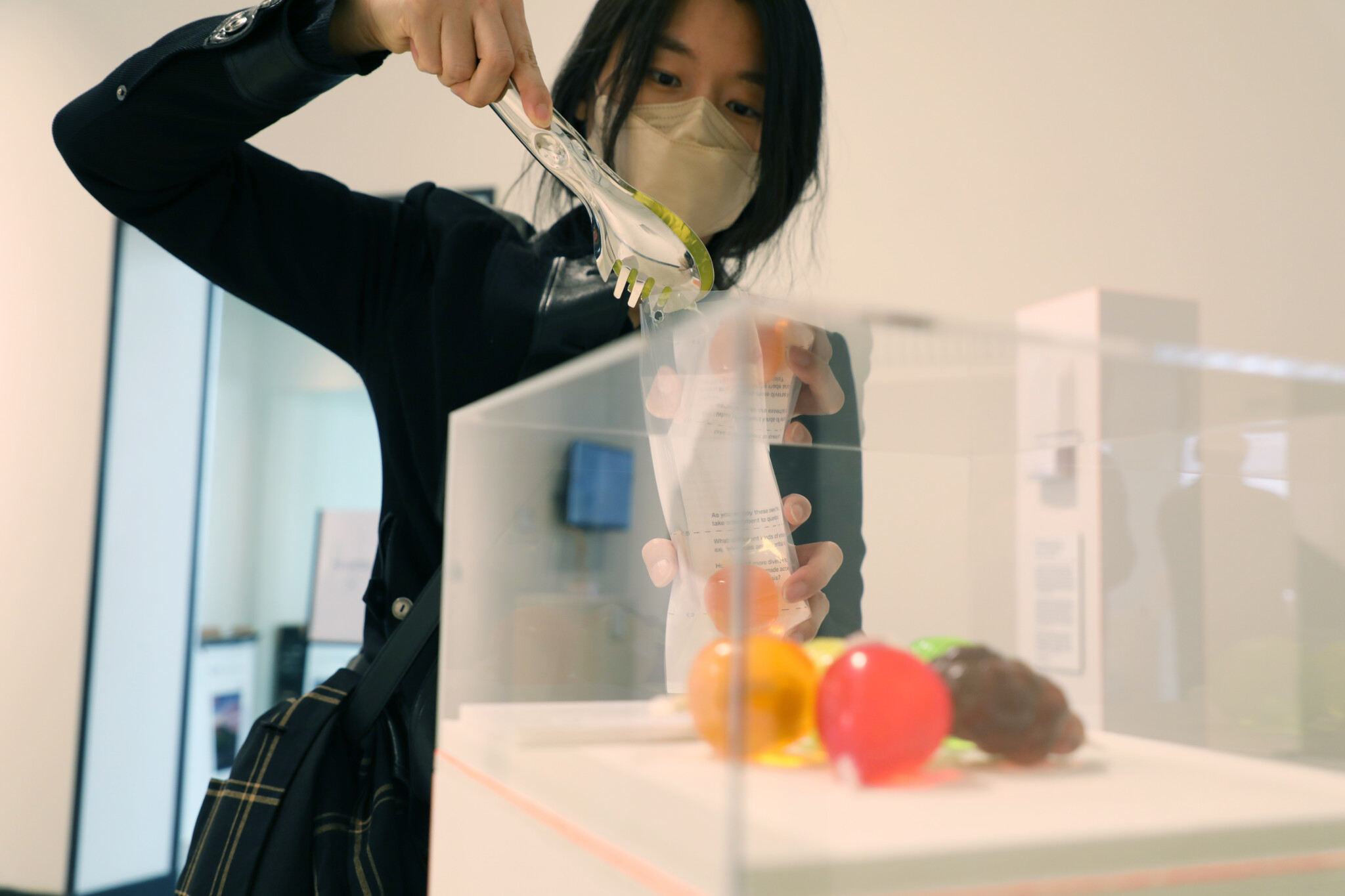🦭Crys Cool🦭

︎
Hello, this is Crys Cool 🧊 based in The Netherlands🇳🇱.
I am a communication designer working across installation, sculpture, video and 3D content.
My work oscillates between media and identity which questions the existence of the visual materials and their mode of production.
︎: hello@crys.cool
︎ @unicorn_fetish
_______________________________________________________
AI ON THE MENU' (2023)
A 3-minute AI-generated film explores the unsettling tension between synthetic sustenance and the human craving for genuine experiences. In a world where everything is controlled, can true satisfaction ever be reached?Concept & Research: Jeroen Junte
Story Design & Editing: Alice Wong
Co-editing: Crys Cool & Rouida Sherif
Data analysis: Crys Cool & Rouida Sherif
AI content generation: Rouida Sherif
Sound Design: Yuval Reuven
Executive Producer: The Next Nature Network
︎
https://vimeo.com/video/1002848371Password👀️: 2023
This project is part of
The Spacefarming Exhitbition curated by Next Nature Network
at Evoluon | Eindhoven,NL until 1 June 2025
︎Book your ticket here
The Spacefarming Exhitbition curated by Next Nature Network
at Evoluon | Eindhoven,NL until 1 June 2025
︎Book your ticket here
_______________________________________________________
'HOW WOULD THE WORLD LOOK LIKE IF IT WERE SOLAR POWERED?' (2022)
Together with Alice Wong, we failed to find answers from existing movies, therefore we interviewed not only experts but students across disciplines to answer this question. A montage that is carefully distilled from a total amount of 1400 minutes of audio interview recordings, and paired with mainstream sunny found-footage. Image credit: Damn Magazine
Image credit: Damn Magazine This project was part of
during 3 Sep 2022—5 Mar 2023 at Het Nieuwe Instituut | Rotterdam,NL
during 3 Sep 2022—5 Mar 2023 at Het Nieuwe Instituut | Rotterdam,NL
_______________________________________________________
'COHESION' (2021)
A land-art that is beyond a singular perspective and fully embedded in NDSM-Werf.
“Dancing in a circle, beating rhythmically, no one is first, no one last, all are the same, all beats in the same way. The start is slow then the rhythm takes over, a sense of infinity arises from this human ring that turns and beats rhythmically.” - Bruno Munari, Square Circle Triangle, 2016.
“Dancing in a circle, beating rhythmically, no one is first, no one last, all are the same, all beats in the same way. The start is slow then the rhythm takes over, a sense of infinity arises from this human ring that turns and beats rhythmically.” - Bruno Munari, Square Circle Triangle, 2016.

Image credit: Rendering - Huey Hoong Chen

Image by: Benjamin Kotek


Through time and between cultures, circles have come to represent a simple yet powerful concept; oneness. This humble shape has been used to communicate ways in which we can come together, where we collectively become more than our individual parts. This message is more important than ever before, as tensions arise in our multicultural communities, fuelled by polarizing politics and divisive social media algorithms. NDSM, as a port, has a history of diversity throughout the different types of people arriving in the Netherlands from around the world. This mix of differences can be seen lives on today through the vibrant day and nightlife, with cultural events, various expressive forms of graffiti, and the wide range of art and design practices that call this area home.
The circle speaks of something large - beyond the individual, to the collective. Through gradually piecing together glimpses of a glowing shape that seems to be scattered throughout the NDSM area, viewers can collectively trace the line of a giant circle. Because of the impossibility of grasping the full circle from any single position on the ground, the work offers infinite vantage points. The process of interacting with it from different angles, heights, and distances represents how we come together to form a shared reality - where no particular point of view should be privileged over another, where the seen and unseen, the visible and invisible are equally considered.
In this way, we want to involve the viewers in becoming part of the shared experience of the circle; in the words of Timothy Morton, “You realize that you are included in the interpretation so your art becomes ‘reflexive’ - it starts to talk about itself” (Being Ecological, 2019).
Exhibiting from 12 November 2021 to January 2022, at NDSM-Werf Amsterdam, under the curation of Come To Light, curated by Petra Heck from Stichting NDSM-Werf.
Read the interview here︎ (Available in Dutch & English)
_______________________________________________________
CONFIDENT FACE-SWAP (2019)


 What: A hacked version of Vogue, based on the portrayal of beauty in the past 50 years of the magazine.
What: A hacked version of Vogue, based on the portrayal of beauty in the past 50 years of the magazine.Why: Advertising in this famous fashion magazine is saturated with a certain beauty standard, captured in idyllic images. But what does such visual perfection convey to ordinary readers?
How: Trends come and go, but, as five decades of Vogue advertising reveal, one quality never goes out of fashion: confidence. Mimicking this trait, Crys Leung photoshopped her own face into the original images to reveal and understand the tools that magazines use to manipulate the reader. It’s about making them buy into a parallel world, where there is no insecurity or sadness.
“Is it me, or the industry that’s going nuts?”
_______________________________________________________
THE THIN ORANGE LINE' (2021)
An art exhibition disguised as a little candy store to challenge the Dutch government policy during the pandemic in 2021.

An interactive installation existing of candy dispensers, plastic bags, and andies.
During the various Dutch Covid-19 lockdowns, there has been a lot of discussion about what is essential and what is not. The word ‘essential’ has been gradually shifting in meaning, practically coming to signify to what stores and services should be (fully) open to the public. Museums and other cultural institutions for example were still closed at the time of the exhibition, while stores for (food) supplies hadn’t been closed at all. This includes candy shops, which have remained open for customers throughout the several lockdowns.
Alice Wong and Crys C raise questions about this essential/non-essential policy with their interactive installation The Thin Orange Line. The title refers to both the thin blue line – which refers to the idea of policemen being the border between a healthy society and complete chaos – as well as orange being the (informal) national colour of the Netherlands. The work consists of several plexiglass displays, showing one piece of candy, including a label as you would see in a museum, playfully disguising art as candy – otherwise, the exhibition couldn’t have opened at all. In this way, the installation walks a thin line between essential and non-essential: can candy be a form of art?
All viewers/customers can use a tong at the bottom of the display, to fill a bag with sweets; pricing ranging from €3 to €7, buying art for very fair prices. These bags are printed with questions to think about while eating candy, about what can wait and what can not – especially in pandemic times. If you have serious cultural cravings, can you still consider art non-essential?
Exhibiting from 17 to 26 May 2021, at Museum Voor Niet-Essentiële Kunst curated by We Are Public at Droog.
Designed by Alice Wong & Crys, film edited by Alice Wong, installations crafted by JB Gambier, text written by Maarten Buser.
![]() .
.
![]()
During the various Dutch Covid-19 lockdowns, there has been a lot of discussion about what is essential and what is not. The word ‘essential’ has been gradually shifting in meaning, practically coming to signify to what stores and services should be (fully) open to the public. Museums and other cultural institutions for example were still closed at the time of the exhibition, while stores for (food) supplies hadn’t been closed at all. This includes candy shops, which have remained open for customers throughout the several lockdowns.
Alice Wong and Crys C raise questions about this essential/non-essential policy with their interactive installation The Thin Orange Line. The title refers to both the thin blue line – which refers to the idea of policemen being the border between a healthy society and complete chaos – as well as orange being the (informal) national colour of the Netherlands. The work consists of several plexiglass displays, showing one piece of candy, including a label as you would see in a museum, playfully disguising art as candy – otherwise, the exhibition couldn’t have opened at all. In this way, the installation walks a thin line between essential and non-essential: can candy be a form of art?
All viewers/customers can use a tong at the bottom of the display, to fill a bag with sweets; pricing ranging from €3 to €7, buying art for very fair prices. These bags are printed with questions to think about while eating candy, about what can wait and what can not – especially in pandemic times. If you have serious cultural cravings, can you still consider art non-essential?
Exhibiting from 17 to 26 May 2021, at Museum Voor Niet-Essentiële Kunst curated by We Are Public at Droog.
Designed by Alice Wong & Crys, film edited by Alice Wong, installations crafted by JB Gambier, text written by Maarten Buser.
_______________________________________________________
Virtual Karaoke Bathhouse (2018)
 .
. 

Singing in the bathroom is almost a universal activity. Wether it be subconscious or natural, it is satisfying for body and mind alike.
This public installation is for me a test as much as an experiment to verify the possibility of recreating the appropriate conditions for people to have the same confidence and ease of performing as they do in the bathroom. And likewise blending in the realm of karaoke, to see if it is possible to create the favourable conditions for people who are too shy to perform in a karaoke bar.
This public installation is for me a test as much as an experiment to verify the possibility of recreating the appropriate conditions for people to have the same confidence and ease of performing as they do in the bathroom. And likewise blending in the realm of karaoke, to see if it is possible to create the favourable conditions for people who are too shy to perform in a karaoke bar.
______________________________________________________
Future Guru Supermarket(2017)
Future Guru Supermarket(2017)
Collaboration w/ Albert Heijn B.V.




When we step in the supermarket, so often our mind got manipulated intensely and immediately by the setting of it, from the locations of shelves; seductively colourful fresh fruits near the entrance, the smell of fresh-made bread; the eye-level displayed products, supermarket is a place to boast the desires of purchase.
Have a closer look in the colourful chewing gum corner:
Gum Guru will help us embrace and enlarge all the senses, plus human intelligence, through talking with gum guru, it will help you find the right gum and more, well, you can talk about weather, joy or frustrations in your life. Online shopping is overrated and in the future people will only getting more lonely by not going outside, a bit anti-social, perhaps they always need someone to talk with, the is the future confession room in a supermarket.
An extraordinary yet basic supermarket based on conversational communication, without superficial fancy elements nor dishonest packaging but let's back to the essence of basic sensation that a product has to offer.
Have a closer look in the colourful chewing gum corner:
Gum Guru will help us embrace and enlarge all the senses, plus human intelligence, through talking with gum guru, it will help you find the right gum and more, well, you can talk about weather, joy or frustrations in your life. Online shopping is overrated and in the future people will only getting more lonely by not going outside, a bit anti-social, perhaps they always need someone to talk with, the is the future confession room in a supermarket.
An extraordinary yet basic supermarket based on conversational communication, without superficial fancy elements nor dishonest packaging but let's back to the essence of basic sensation that a product has to offer.
________________________________________________________
Flamingo music video made with 24 hours (2016)
Spontaneous Music video made with Moreno Schweikle, Janne Schimmel, Alex Gehlen,made within 24 hours in 2016 summer, prior to visiting the concert of Kero Kero Bonito in Amsterdam and managed to showcase it to the band <3. May we always carrying this energy wherever or however we go.
